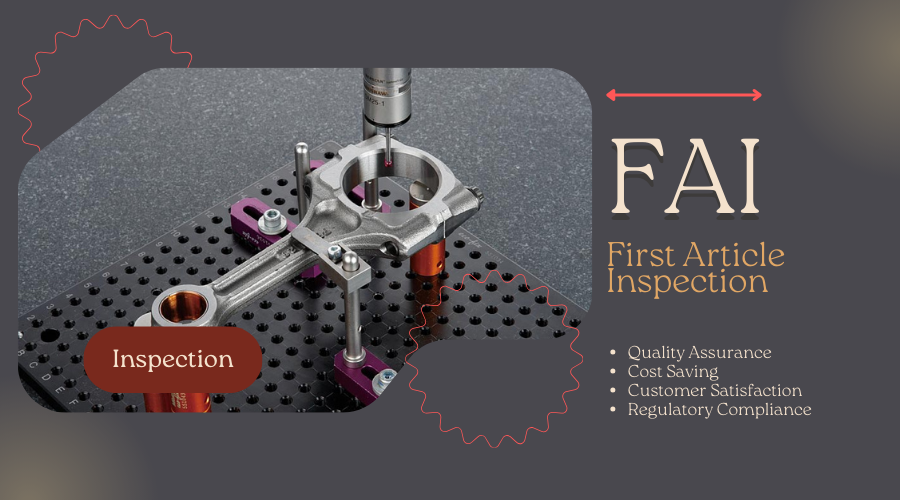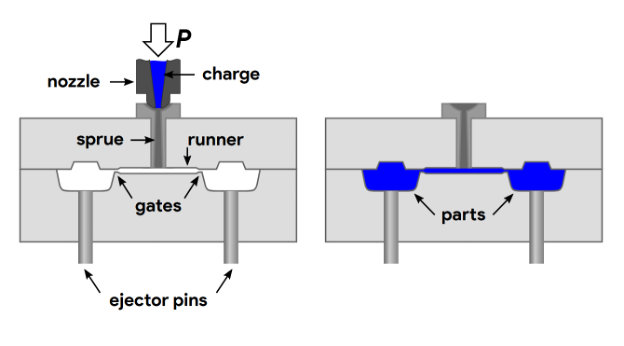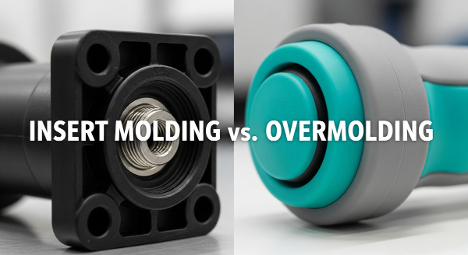A First Article Inspection (FAI) is a production validation process for verifying that a new or modified production process produces conforming parts that meet the manufacturing specification detailed in technical or engineering drawings. Whether producing components for aerospace, automotive, or consumer electronics, ensuring that each part meets stringent specifications is essential. This is where First Article Inspection (FAI) plays a crucial role.

What is First Article Inspection
First article inspection is a systematic process used in manufacturing to validate the initial production run of a new part or component. It involves thoroughly examining and testing the first sample or articles from a production run to verify that they conform to all specified requirements, including design specifications, engineering drawings, and any other applicable standards or regulations.
The Purpose of FAI
The primary purpose of FAI is to ensure that the manufacturing process is capable of consistently producing parts that meet the customer’s requirements. By conducting FAI, manufacturers can identify and rectify any discrepancies or issues early in the production process, thus minimizing the risk of producing defective parts or components.
Key Components of FAI
1. Verification of Design Requirements: FAI begins with a comprehensive review of the design documentation, including engineering drawings, specifications, and any other relevant documents. This step ensures that the manufactured parts are in accordance with the intended design.
2. Measurement and Inspection: Precise measurements and inspections are conducted on the first article samples using advanced tools and equipment. This may include dimensional measurements, material analysis, and functional testing to ensure that the parts meet all specified requirements.
3. Documentation and Reporting: Detailed documentation of the FAI process, including inspection results, measurements, and any deviations from the design requirements, is essential. This documentation serves as a record of compliance and provides valuable data for future reference.
Benefits of FAI
- Quality Assurance: FAI helps to verify the quality and consistency of manufactured parts, reducing the risk of defects and non-conformities.
- Cost Saving: By identifying and addressing issues early in the production process, FAI helps to minimize the costs associated with rework, scarp, and potential product recalls.
- Customer Satisfaction: Ensuring that parts meet all specified requirements through FAI helps enhance customer satisfaction and build trust in the manufacturer’s ability to deliver high-quality products.
- Regulatory Compliance: FAI is often required by regulatory bodies, particularly in industries such as aerospace and automotive, to ensure compliance with safety and performance standards.
Conclusion
First article inspection (FAI) is a critical step in the manufacturing process, enabling manufacturers to verify the quality and compliance of new parts or components. By conducting thorough inspections and measurements, manufacturers can identify and address any issues early, ensuring that subsequent production runs meet the required specifications. Ultimately,FAI plays a vital role in maintaining product quality, customer satisfaction, and regulatory compliance in manufacturing industries around the world.
-q4gvl4k29y4hq8j9rjpapvj0ft06fje63olt7p210i.png)


